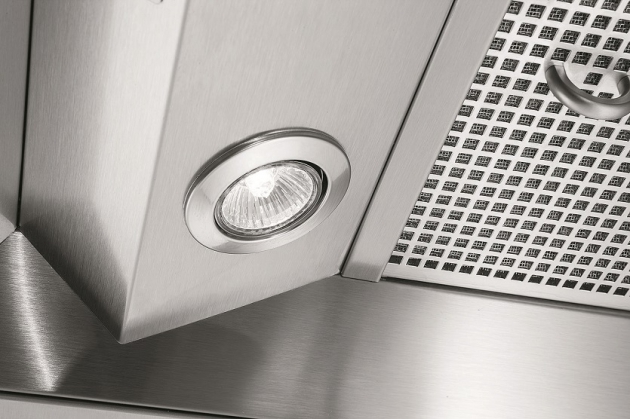Having the right range hood provides more than just avoiding setting off the smoke alarm in your kitchen. A good range hood provides vital ventilation for your kitchen, to avoid steam and food particles damaging your cabinetry and preventing cooking smells from permeating into other areas of your home. With such a vital role, it is essential that you choose the right model for your kitchen, so here we’ll explore considerations to help you make your purchase decision.
Assess the Exhaust System
When choosing a new range hood, you’ll find that there are several options for exhaust systems. As the name suggests, ducted or vented systems use ducts to channel the air away and out of your home. This means that you shouldn’t vent into an interior space inside your home, such as an adjacent room or attic. Ducted models require mounting the hood to an exterior wall for shorter and more efficient ducting. If you need to take the ducting further, it will make the installation and potential future maintenance more complicated and expensive.
Duct-free or non vented systems filter, clean and return the air to your kitchen. These systems are typically less efficient compared to a ducted system, and they require regular filter replacement and cleaning, so you’ll need to be prepared for maintenance tasks.
Your Kitchen Layout
The kitchen layout is a primary consideration for choosing a new range hood. You’ll need to know the space you’re working with and whether the hood should be wall mounted, incorporated into the cabinetry, suspended from the ceiling or made part of an overhead canopy. A general rule of thumb is to mount the hood 24-30 inches higher than the cooktop, but you should always check the manufacturer recommendations.
Calculate Your Fan Power
The size of space will dictate the power requirements of the exhaust hood fan. You need sufficient power to clear the air and prevent strong cooking odors lingering. The calculation to determine your fan power requirements is based on the volume of your room, so multiply the length, width and ceiling height of your kitchen. Ideally, choose a range hood with the capacity to clean or replace the air in your kitchen volume eight times every hour. The exhaust fan will be labeled with the CFM rating, which is cubic feet per minute. So, if your exhaust fan has a 1,000 CFM rating, it can remove the air from a 10ftx10ftx10ft kitchen in one minute. Multiply this figure by 60, and you will determine how much air can be moved in an hour.
Consider Noise
While you may think that the most powerful range hood is the best option, if it sounds like a jet engine in your kitchen, you’re not likely to use it very often. Home appliance experts suggest choosing a model that draws air towards the perimeter or edges of the hood, rather than over a large area. This makes the hood more efficient and also reduces the noise level. If possible, test the hood in the showroom to check how noisy it will be in your kitchen.
Choose the Right Style
Range hoods are available in a fantastic variety of styles, so it is relatively simple to choose one to suit your kitchen decor. It is worth thinking about whether a material is easy to clean or will need special maintenance, whether it is more costly than a simpler model and whether it complements the general architectural style of your kitchen and home. The right style of range hood can seamlessly blend into your kitchen or make a bold statement, but you’ll need to decide which look you prefer.
If you’re thinking about a new range hood, you can explore your options with this online range hood collection or for further help contact a home appliance expert.

